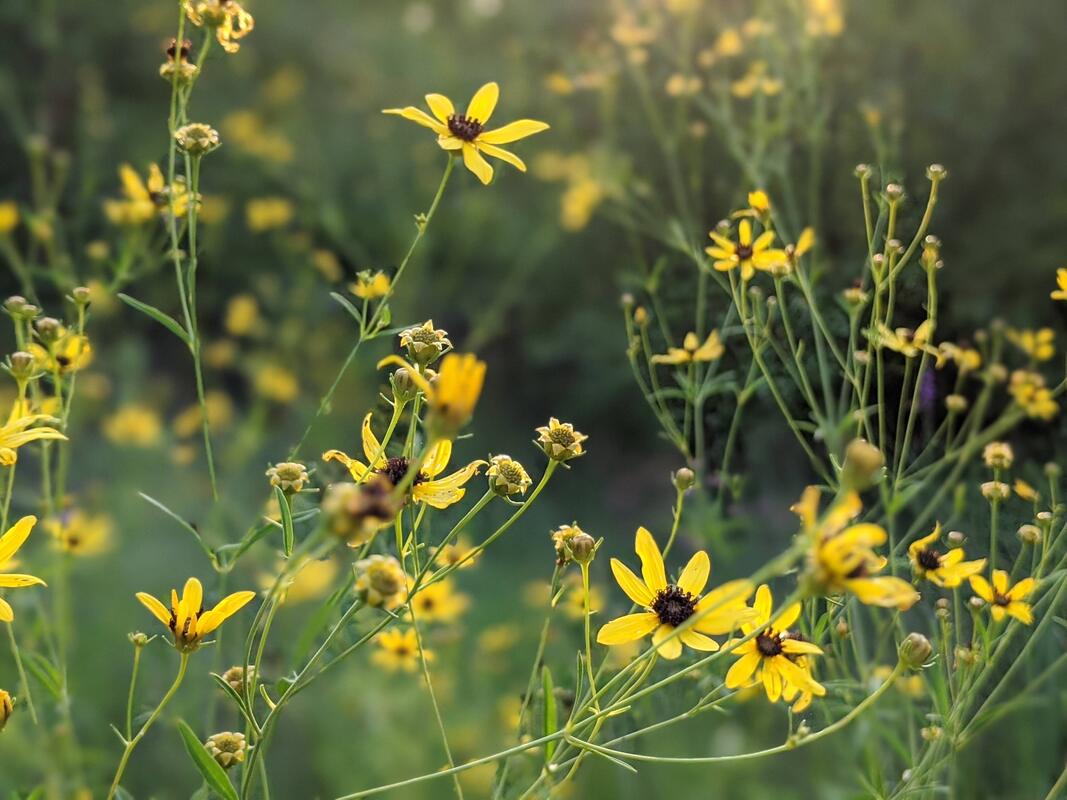Your garden is STILL a garden -- an unnatural space that has little resemblance to what your natives plants evolved with in the wild. We're not only talking soil microbes but plant competition above and below ground, not to mention a host of other disturbances that constantly help shift plant communities from year to year and create dynamic stability. Your garden is a pampered space by default simply because 20 plants aren't trying to exist in the same square foot. Your garden needs tending -- but the tending will look different than the regimented, joyless slog that commercials suggest is necessary.
What does low maintenance mean?
1) It does not mean no maintenance.
2) Plants carefully researched to suit the site (soil, sun, slope).
3) Plants carefully researched to match one another in a dynamic community. This means considering seasonal and annual succession, root habit, above ground habit, etc. For more, see our online class "Fundamentals of Garden Layers."
4) Less weeding because you used way, way more plants than a traditional garden -- we're talking plugs on 6-12" centers, perhaps even combined with seeding a green mulch around them. Plus, you count on and want the plants to reproduce to give you more plants for even more ecosystem function.
5) Less watering because you matched plants to the site and to one another. So plants that like it dry are placed in dry conditions, plants that like it moist are placed in moist conditions, etc. The knowledge required goes well beyond a simple plant tag.
6) Plants that don't spread aggressively where you don't want them, creating a monoculture. This means you have to research the plants to know something about their behavior such as: how they propagate, how easily they propagate, in what site conditions, etc.
And the big one....
7) Low maintenance is also about a shift in perception to accepting that plant composition changes over time and we want that. Plants are not marble statues that never move and always look the same. Plants move, proliferate, diminish, self organize, and generally show us what and where they want to be. The problem is in traditional design and horticulture we treat plants like collector items and gardens like canvases, when plants are living organisms interacting often unpredictably with other living organisms, and we are simply managers. How we manage a garden dictates how much maintenance we feel a garden requires.
For example, if you believe plants should never spread and are constantly yanking seedlings, you may think the garden is high maintenance; same goes if you put a moisture-loving plant on a sandy slope and discover you have to water it every two days. Management is different than maintenance. In management we don't obsess over every plant or detail in a bed (no helicopter parenting), but let the plants guide the conversation a little bit more; we can let the plants lead because we researched the plants heavily before installation and studied wild plant communities and understand what they will do in the years to come. Obviously, every garden space is different and we can't predict with 100% accuracy what plants will do in that specific space, but the more knowledge you bring to the table the less maintenance you'll do. Instead, you'll be managing, learning from the plants with patience over the years, never assuming the garden or gardener is a failure if a plant performs in a way you didn't desire it to perform.
Gardens need tending. Even a lush, layered, natural garden using native plants in similar communities that are found in the wild. They shouldn't need fertilizing, watering, annual mulching, heavy weeding, or chemical spraying if you're planting them considering natural layers. But they will need management because things happen: storms, late freezes, voles, extreme drought, extreme flooding, natural lifespan, etc. You'll likely need to mow the space down every spring vs every week if it were lawn -- that is less maintenance off the bat, but not no maintenance. You'll need to thin, add, and replace -- but not constantly and maybe just once a year.
Maintenance tends to be joyless and soul sucking, a battle of wit and will; management is giving up some level of control and tending the space when it tells you it needs it. In this way management is a constant surprise that some may find challenging, and others inspiring and in sync with their own rhythm. If you can get to a place where plants are co-conspirators in habitat and design revival, then maintenance will never exist for you.



 RSS Feed
RSS Feed

